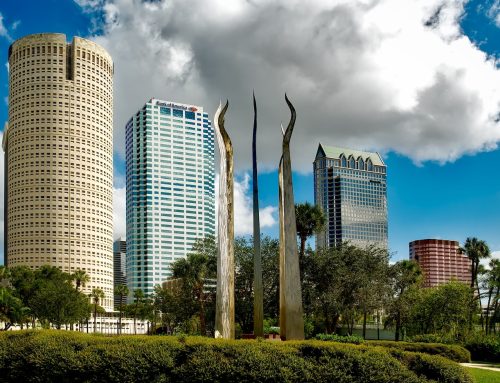As the sun sets over the beautiful beaches of Southwest Florida, an enigmatic and concerning natural phenomenon called the “Red Tide” paints the waters with an eerie crimson hue. This annual occurrence, caused by a massive bloom of harmful algae, poses significant threats to marine life, coastal communities, and the tourism industry in the region. In this blog, we will delve into the complexities of the Red Tide, exploring its causes, consequences, and the efforts being made to mitigate its impacts on this picturesque part of the Sunshine State.
Understanding the Red Tide
The Red Tide refers to an algal bloom dominated by a species called Karenia brevis, a single-celled, photosynthetic organism. While these algae are typically found in the Gulf of Mexico, they can multiply rapidly under certain conditions, leading to a phenomenon known as a “bloom.” During these blooms, large concentrations of K. brevis release toxins into the water, posing severe risks to marine life and human health.
Causes of Red Tide
The precise triggers for a Red Tide remain a subject of ongoing research, but several factors contribute to its occurrence. Nutrient pollution, particularly from agricultural runoff and sewage discharge, is believed to be a significant factor that fuels algal growth. Warm ocean temperatures and calm seas also encourage the proliferation of the Red Tide, making Southwest Florida’s coastal waters a potential hotbed for these blooms.
Impact on Marine Life
The Red Tide is devastating to marine ecosystems. As the K. brevis algae release toxins, marine organisms, including fish, shellfish, and marine mammals, become exposed to harmful levels of these substances. The toxins can attack the nervous system of fish, leading to mass die-offs known as “fish kills.” Additionally, the Red Tide can lead to widespread deaths of sea turtles, dolphins, manatees, and seabirds, further disrupting the region’s delicate ecological balance.
Economic and Health Implications
Beyond the ecological consequences, the Red Tide has significant economic and health implications for coastal communities. The tourism industry, which heavily relies on the pristine beaches and flourishing marine life of Southwest Florida, takes a hit during Red Tide events. Visitors are often discouraged from swimming and participating in water based activities due to health risks posed by the toxic algae.
Moreover, the seafood industry faces challenges as shellfish and certain fish species accumulate toxins from the Red Tide. This leads to the closure of fishing grounds, causing financial strain for local fishermen and businesses.
Human health is also at risk, as the toxins can become aerosolized and carried by the wind. Inhalation of these toxins can cause respiratory problems, especially for individuals with pre-existing respiratory conditions like asthma.
Mitigating the Impact
Addressing the Red Tide issue is a complex task requiring a multi-faceted approach. Here are some of the steps being taken to mitigate the impact of Red Tide in Southwest Florida:
Monitoring and Early Detection: Establishing comprehensive monitoring programs helps scientists and authorities detect the onset of a Red Tide bloom and issue timely warnings to the public.
Research and Education: Ongoing research is essential to understand better the factors contributing to Red Tide blooms. Educating the public about the causes and consequences of Red Tide can foster support for conservation efforts and responsible practices.
Nutrient Reduction: Implementing measures to reduce nutrient pollution, such as improving wastewater treatment, managing agricultural runoff, and promoting responsible fertilizer use, can help limit the occurrence and intensity of algal blooms.
Innovative Solutions: Exploring innovative methods like using nanotechnology and algae-eating organisms to combat Red Tide blooms without causing additional harm to the ecosystem.
Stakeholder Collaboration
Addressing the Red Tide challenge requires collaboration among various stakeholders, including government agencies, environmental organizations, researchers, local businesses, and residents. Establishing partnerships and fostering open communication channels are vital to developing comprehensive strategies for mitigating the impacts of Red Tide.
Government agencies are critical in implementing regulations and policies to manage nutrient pollution and monitor water quality. The Environmental Protection Agency (EPA), Florida Fish and Wildlife Conservation Commission (FWC), and local health departments are key entities monitoring and responding to Red Tide events.
Environmental organizations also contribute significantly to Red Tide mitigation efforts. Non-profit organizations, like the National Oceanic and Atmospheric Administration (NOAA), The Nature Conservancy, and local environmental groups, work on research initiatives, public outreach, and advocacy for sustainable practices.
Residents and businesses in coastal communities are essential partners in the fight against Red Tide. Individuals can adopt eco-friendly practices, such as reducing fertilizer use, properly disposing of waste, and supporting sustainable tourism. Local businesses can promote environmental responsibility and eco-tourism, contributing to the preservation of the region’s natural beauty.
Innovative Technologies and Research
Advancements in technology and ongoing research offer hope for finding more effective ways to combat and manage Red Tide blooms. Scientists are continuously exploring various methods to detect and predict blooms accurately. Remote sensing technologies, drones, and satellites aid in monitoring algae concentrations, allowing for timely responses and appropriate actions.
Research efforts also focus on understanding the marine ecosystem’s ecological interactions during Red Tide events. This knowledge helps identify vulnerable species and assess the long-term consequences of algal blooms on the biodiversity and overall health of the Gulf of Mexico.
Community Education and Public Awareness
Raising public awareness is vital in garnering support for Red Tide mitigation measures. Community education initiatives can help residents and visitors understand the causes and effects of Red Tide and encourage them to adopt sustainable practices that reduce nutrient pollution.
Educational programs in schools can also play a crucial role in nurturing environmental stewardship among the younger generation. By instilling an appreciation for marine life and the importance of preserving natural habitats, we can inspire future leaders and advocates for sustainable practices.
Long-Term Strategies
Addressing the Red Tide issue requires a long-term vision and sustained commitment. A combination of short-term interventions and long-term strategies is essential for ensuring the resilience of Southwest Florida’s marine ecosystems. By prioritizing the health of the Gulf of Mexico, we can better safeguard the region against the destructive impacts of harmful algal blooms..
FAQs
What is the Red Tide, and why does it occur in Southwest Florida?
The Red Tide is a natural phenomenon caused by a bloom of the harmful algae species Karenia brevis. This single-celled organism produces toxins that can have detrimental effects on the marine life and human health. Red Tide blooms occur in Southwest Florida when favorable environmental conditions, such as warm ocean temperatures, calm seas, and nutrient-rich waters, allow K. brevis to multiply rapidly.
Is the Red Tide a new problem in Southwest Florida?
No, Red Tide has been documented in Florida for centuries. Indigenous people and early settlers in the region reported discolored water, and fish kills associated with algal blooms. However, the frequency and severity of Red Tide events have increased over the past few decades, likely due to human activities contributing to nutrient pollution.
How does the Red Tide impact marine life?
The toxins released by K. brevis during a Red Tide bloom can devastate marine organisms. The toxins can affect fish, shellfish, sea turtles, dolphins, manatees, and seabirds, leading to mass die-offs known as “fish kills.” The toxins attack the nervous system of fish, making them disoriented and unable to swim correctly. The impacts on marine life disrupt the affected area’s food chain and ecological balance.
Can Red Tide toxins affect human health?
Yes, Red Tide toxins can have adverse effects on human health. When the algae bloom breaks apart and becomes airborne, the toxins can be carried by the wind and cause respiratory issues, especially for people with asthma or other respiratory conditions. It’s essential to avoid exposure to aerosolized toxins by staying away from affected beaches during Red Tide events.
How does the Red Tide impact tourism and local businesses in Southwest Florida?
The Red Tide significantly impacts the tourism industry in Southwest Florida. When Red Tide blooms occur, visitors are often discouraged from swimming in the water, which can lead to a decline in beach tourism. Local businesses that rely on tourism, such as hotels, restaurants, and recreational activities, can suffer financial losses during Red Tide events.
What is being done to mitigate the impact of Red Tide in Southwest Florida?
Red Tide mitigation efforts involve collaboration among government agencies, environmental organizations, researchers, and the local community. Strategies include:
- Monitoring and early detection.
- Reducing nutrient pollution.
- Implementing sustainable practices.
- Promoting public awareness and education.
Additionally, ongoing research and technological advancements aim to improve our understanding of Red Tide blooms and develop more effective mitigation strategies.
Can Red Tide blooms be predicted?
While it is challenging to predict the exact timing and location of Red Tide blooms, advancements in technology and research have improved our ability to monitor and forecast their occurrence. Remote sensing, satellite imagery, and water quality monitoring systems provide valuable data to detect and track the development of algal blooms, enabling authorities to issue timely warnings to the public.
Are there any long-term solutions to prevent Red Tide blooms?
Long-term solutions to prevent Red Tide blooms require addressing the root causes of algal growth, primarily nutrient pollution. Implementing sustainable practices to reduce nutrient runoff from agricultural activities, wastewater discharge, and fertilizers is crucial. Furthermore, fostering public awareness and support for environmental conservation can lead to long-term changes in human behavior to protect marine ecosystems.
Can individuals help in mitigating Red Tide impacts?
Absolutely! Individuals can play a significant role in Red Tide mitigation efforts. We can collectively reduce nutrient pollution by adopting sustainable practices, such as reducing fertilizer use, properly disposing of waste, and supporting eco-friendly tourism. Participating in local clean-up initiatives and supporting environmental organizations also helps preserve the health of Southwest Florida’s marine ecosystems.
The Red Tide in Southwest Florida remains a complex environmental challenge that demands cooperation and commitment from various stakeholders. By understanding the causes and impacts of Red Tide, supporting research and education, and taking individual actions, we can strive to protect the region’s stunning marine life, coastal beauty, and the livelihood of its communities. Together, we can work towards a future where Red Tide is less frequent and less severe, ensuring a sustainable and thriving environment for future generations.




